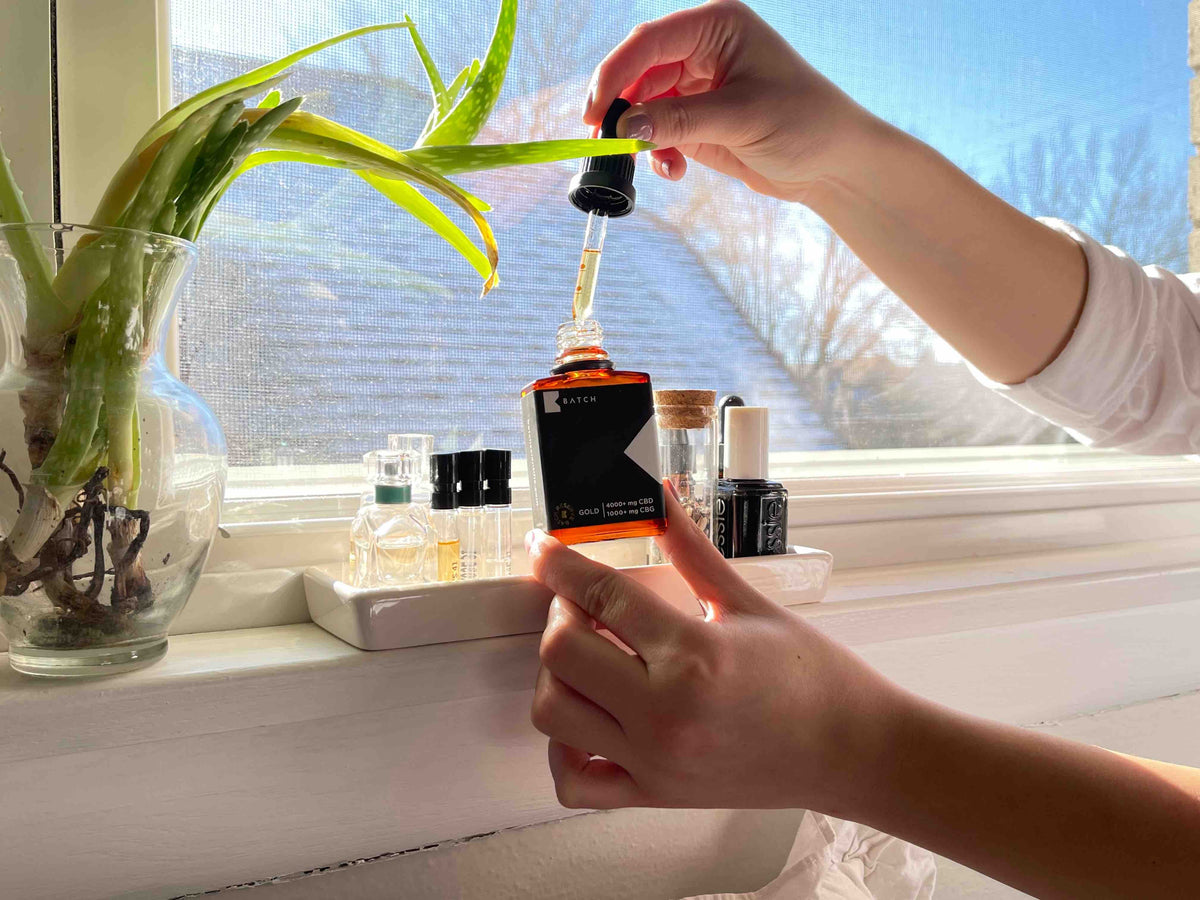
The color of CBD oil
Listen to this article:
Why are there so many different color shades for CBD oils? You may even have noticed color differences between dyes from the same brand. The color of CBD oil can in fact range from transparent or slightly golden to dark brown, or even almost black.
The color of CBD oil alone does not mean that it is more effective than another. However, it can tell you a lot about the product and how it is made. Several factors determine the color of the finished product. These include the type of hemp extract, extraction method, carrier, as well as additional ingredient components. In this article we offer to help you understand how each of them affects color.
Pure Cannabidiol isolate in its raw form is a white, almost powdery substance. When combined with a carrier oil (see below), it dissolves and gives little or no color. This is why most Cannabidiol isolate tinctures are generally colorless.
In contrast, full-spectrum hemp extract is typically dark green or brown. This extract contains all natural cannabinoids, terpenes and other plant raw materials. Its dark color is therefore a reflection of the hemp plant from which it comes. Therefore, the color of Full Spectrum and Broad Spectrum CBD oil ranges from golden to dark brown. The higher the concentration of the hemp extract, the darker the color of the finished product will be.
CBD oils are made by diluting hemp extract in a carrier oil. Without the carrier, the raw hemp extract would be too thick and difficult to consume in the form of drops. The most commonly used carriers are MCT coconut oil , hemp seed oil, or olive oil. The liquid in your bottle is therefore a combination between hemp extract, which contains the active molecules and a more or less significant quantity of carrier oil. The type, quantity and color of the support used therefore have an impact on the color of the finished product.
MCT coconut oil is almost colorless or transparent. Hemp seed and olive oils are often golden in color with a hint of green.
As a result, products that use hemp seed oil or olive oil as a carrier tend to be darker in color than those with a coconut MCT carrier. To learn more about the possible health benefits of MCT oil, here is a summary of several studies .
In order to obtain the hemp extract that is used in the manufacture of a product containing cannabidiol, the manufacturer must go through an extraction process. This means separating the useful hemp extract from the rest of the plant raw material. The two most common processes used by companies manufacturing CBD products are ethanol extraction and CO2 extraction.
The ethanol extraction process also causes the extraction of elements such as chlorophyll, unlike CO2 extraction. Read a study on the subject (in English). Chlorophyll tends to give a green tint to the finished product. It is sometimes filtered, but its presence is interesting because it is a natural component of hemp. CBD oil with a slightly green color indicates the presence of chlorophyll, obtained by the ethanol extraction method.
If you have a CBD oil that is completely clear and colorless, it is likely an isolate product that uses MCT coconut oil as a carrier. If the oil is dark green or brown, it is likely full or broad spectrum. It's always a good idea to read your product label and third-party lab reports to better understand each product's ingredients.
The color of CBD oil may even vary a little from batch to batch of the same brand. This can happen when the manufacturer changes plant varieties or hemp suppliers. If you notice a significant change and have any concerns, do not hesitate to contact the company who will provide you with all the explanations.
More articles on the same theme:
Submit your email to get updates on products and special promotions.

